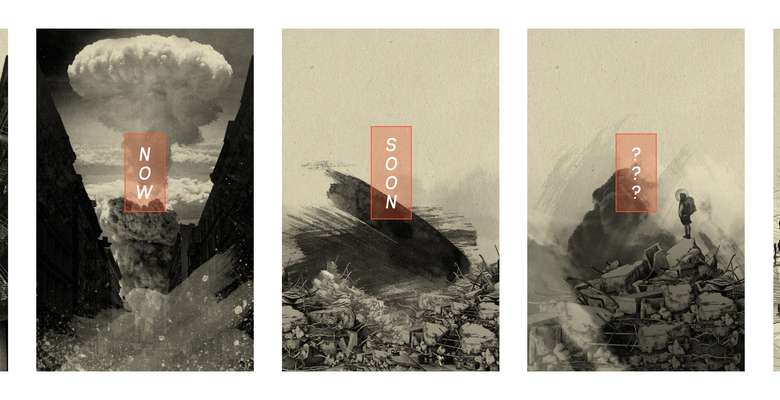Idea by
Samantha Ong, Amanda Sarantos, Emir Abdul-Emir
placehold
Call for ideas 2019
(blank)bomb, (blink)city
(blank)bomb, (blink)city

- New alliances
Our work investigates the role of political tension and fear in physically and socially shaping our cities and lives. We examine a precedent of anti-nuclear activism during Cold War era New York and then propose a speculative shelter solution for a city post-nuclear attack. The absurdity of our imagined proposal, as well as the idea of “nuclear preparation,” begins the dialogue about designers extending their responsibility beyond the tangible, particularly in different states of crisis.
On the behalf of our communities, is it up to the architects to design work that inspires hope and creates conditions for thriving urban landscapes rather than works that prepare for and justify irreversible destruction? Though our project imagines a nuclear dystopia, this surreal narrative brings attention to architecture’s role in shaping the attitude of the population— especially in dire situations. How do our methods of design and approaches to humanity translate spatially and thus, affect us all?

Imagined political poster for a government set on engaging in nuclear war. We imagine that the campaign would portray a positive take on the total destruction of the earth. Propaganda, right?

Post-detonation. A not so clean slate...surprise, surprise.

An architectural solution to living in a post-nuclear city. It isn’t the new, thriving city we were advertised. Instead, we’ve developed alongside the wreckage and radiation.

An alternate solution, calling for disarmament, rather than defense.
Let’s start here.
(blank)bomb, (blink)city
(blank)bomb, (blink)city

- New alliances
Our work investigates the role of political tension and fear in physically and socially shaping our cities and lives. We examine a precedent of anti-nuclear activism during Cold War era New York and then propose a speculative shelter solution for a city post-nuclear attack. The absurdity of our imagined proposal, as well as the idea of “nuclear preparation,” begins the dialogue about designers extending their responsibility beyond the tangible, particularly in different states of crisis.
On the behalf of our communities, is it up to the architects to design work that inspires hope and creates conditions for thriving urban landscapes rather than works that prepare for and justify irreversible destruction? Though our project imagines a nuclear dystopia, this surreal narrative brings attention to architecture’s role in shaping the attitude of the population— especially in dire situations. How do our methods of design and approaches to humanity translate spatially and thus, affect us all?

Imagined political poster for a government set on engaging in nuclear war. We imagine that the campaign would portray a positive take on the total destruction of the earth. Propaganda, right?

Post-detonation. A not so clean slate...surprise, surprise.

An architectural solution to living in a post-nuclear city. It isn’t the new, thriving city we were advertised. Instead, we’ve developed alongside the wreckage and radiation.

An alternate solution, calling for disarmament, rather than defense.
Let’s start here.